Philippines: Kellda Centeno
With over 7,000 islands, the Philippines is said to be the “Center of the Center” of marine fish biodiversity with the highest density of species per unit area. I took all of these photos over the past two years from my dive trips around my home country, the Philippines.
I dive most frequently in Anilao, Batangas because it’s just a 3-hour drive from home. With around 50 dive sites, I never get bored going back again and again. It’s known for rare macro subjects from hairy shrimps to larger hairy frogfish, there’s always something to see. While I don’t frequently dive with my wide angle lens here, there are also beautiful reefs with colorful corals and an abundance of reef fish.
Tubbataha Reefs Natural Park is in the middle of the Sulu Sea. It has 10,000 hectares of healthy coral reefs and amazing visibility. Mantas, whale sharks, hammerheads and so much more in just one trip. It’s only accessible by liveaboard from March to early June. If I could visit every year, I would!
Dauin in Dumaguete is our muck diving heaven. The entire shoreline is practically muck site after muck site. My favorite moment was seeing some harlequin shrimp feeding. I heard that during Octopus season one can easily see 8 different species in one dive, so I must go back to verify this claim! From Dauin, it’s an easy trip by bangka to Apo Island for wide-angle opportunities with schooling jacks and turtles on every dive.
My diving bucket list (and do-over list) has only gotten longer through the years! Apo Reef is the second largest contiguous coral reef in the world. Malapascua has the beautiful thresher sharks. Moalboal has the schooling sardines. Then there’s also Puerto Galera for more macro and reefs, Sogod Bay and Ticao Pass for the whale sharks and mantas, Romblon for super macro, Coron and Subic Bay for wrecks, Bohol for more turtles…
There are many beautiful places to dive around the world, but I feel blessed to have such easy access to so much underwater life. Call me biased, but there is just no place like home.
To see more of Kellda’s work, please follow @scubakelldy on Instagram.
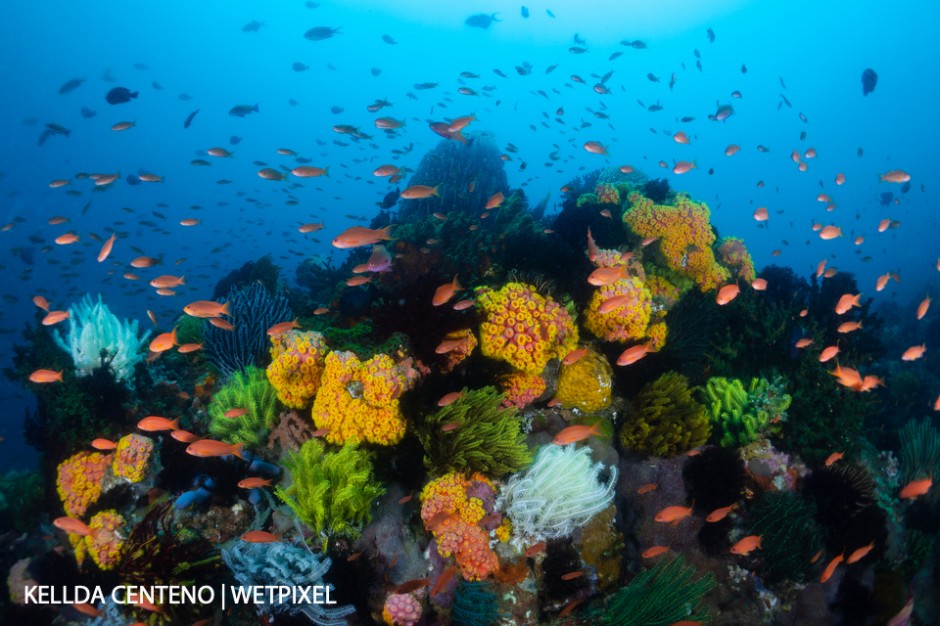
An explosion of colors at Sombrero Island, off the shoreline of Anilao.
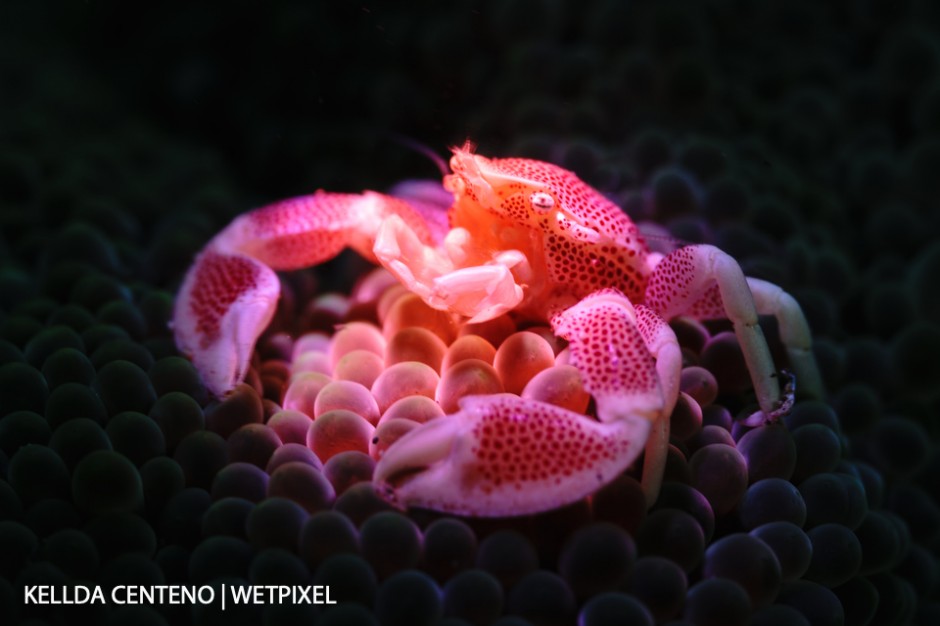
An ordinary porcelain anemone crab lit differently with a pink light.

Saw this harlequin shrimp feeding on a starfish under a rock in Dauin.
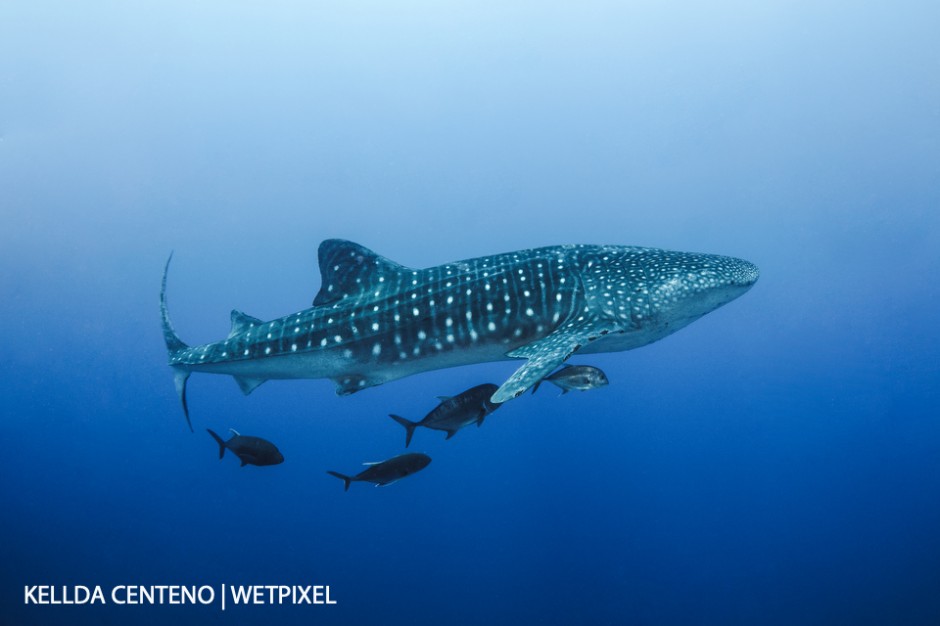
Almost missed this scene because I was facing the reef instead of the blue. Whaleshark and jacks at Tubbataha.
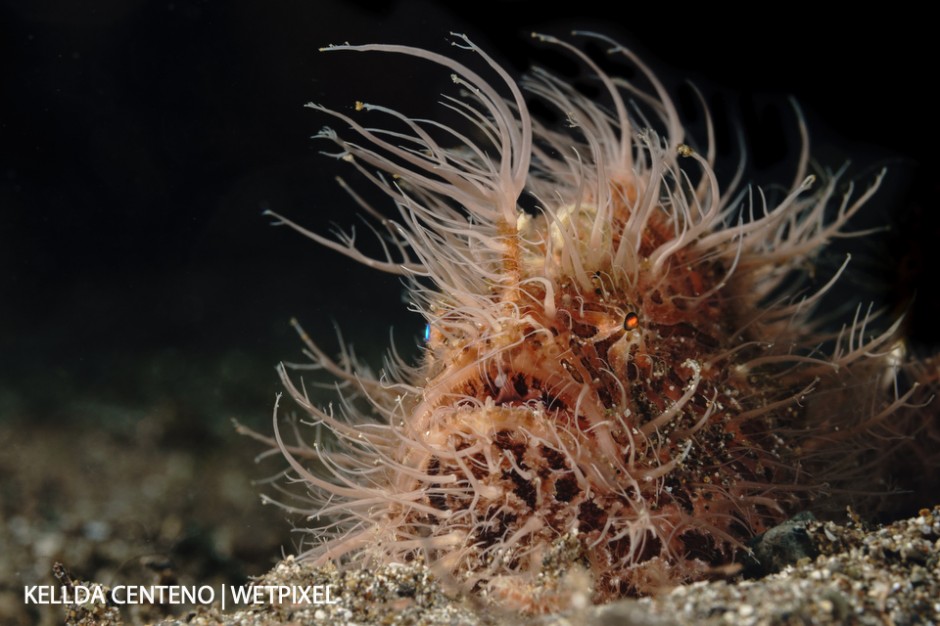
Hairy striated frogfish always have bad hair days. This was the third hairy frogfish I saw in one day in Anilao.
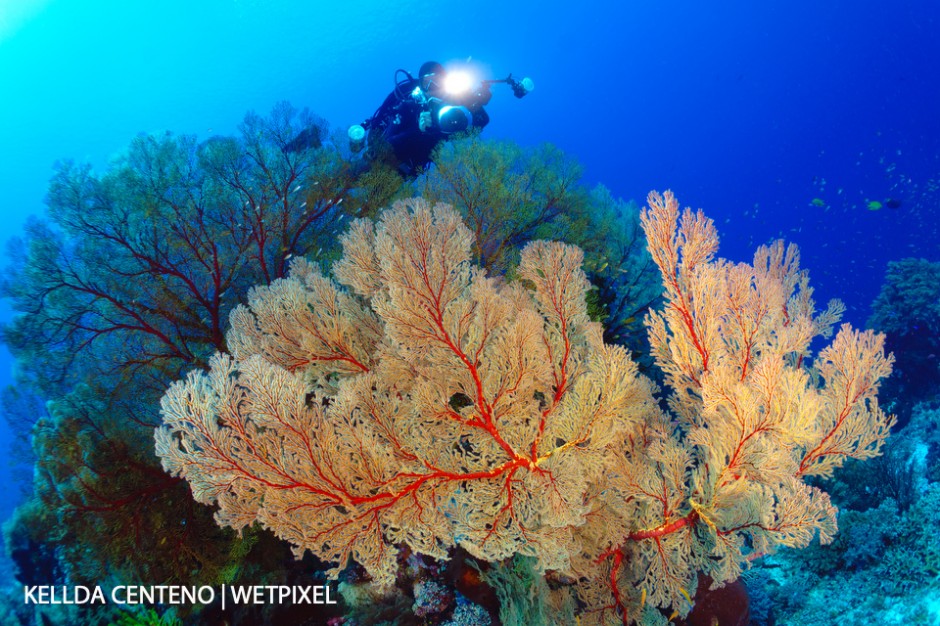
Very large sea fans and my dive buddy at Tubbataha.
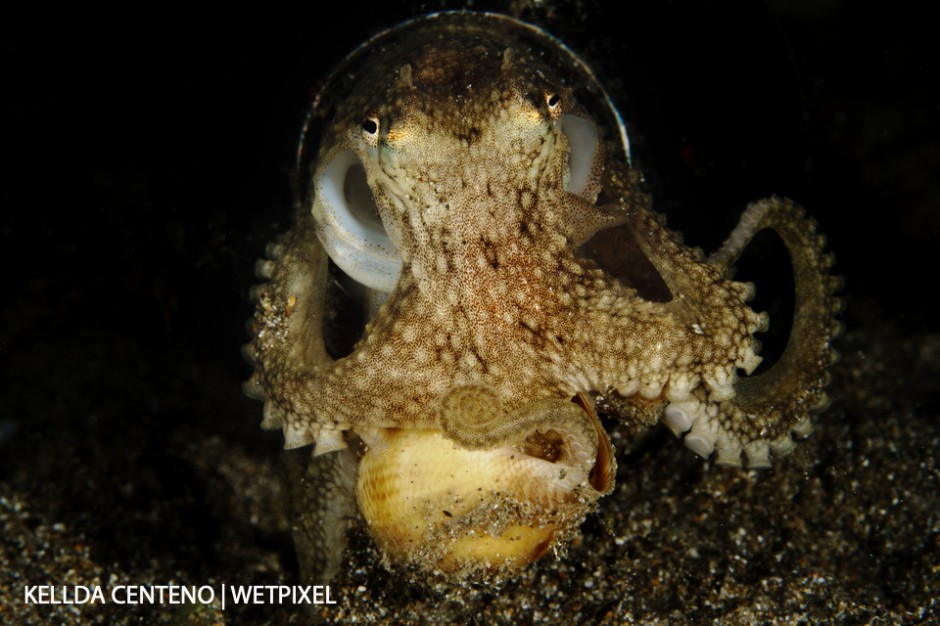
During a night dive at Anilao Pier, this octopus living out of a beer bottle was wrestling with a snail. The octopus eventually won its dinner retreated into its home.
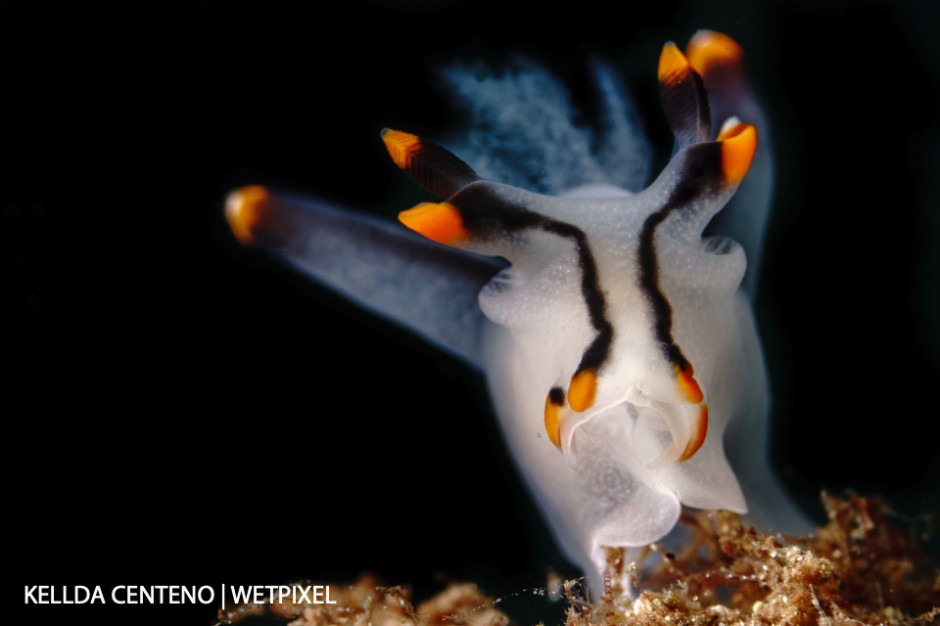
Anilao is known for all sorts of nudibranchs. Here’s a white “Pikachu” (I’m still on the hunt for a yellow one).
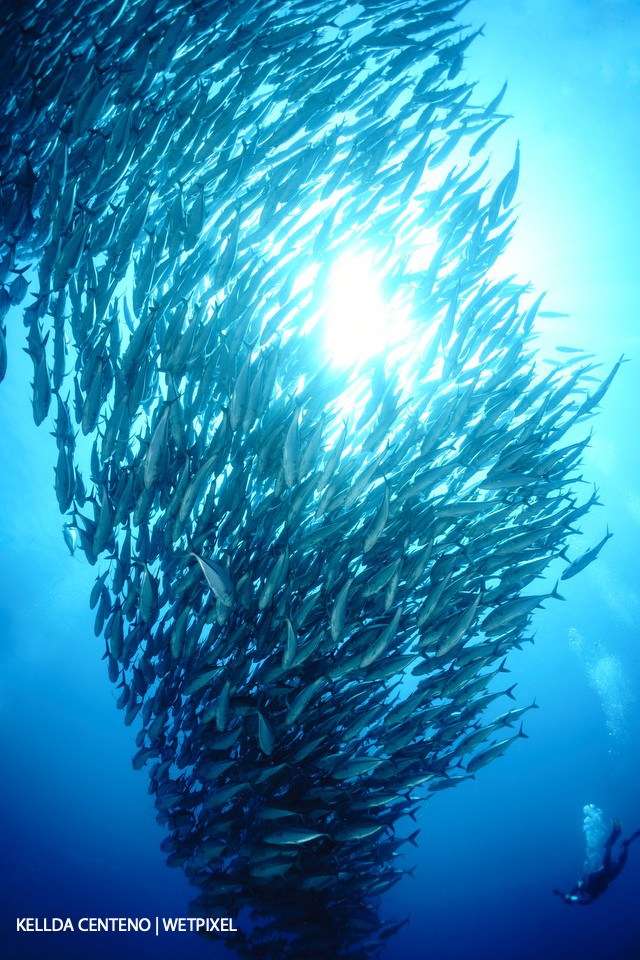
Less than an hour by bangka from Dauin, Apo Island didn’t disappoint with large schools of jacks on every dive.
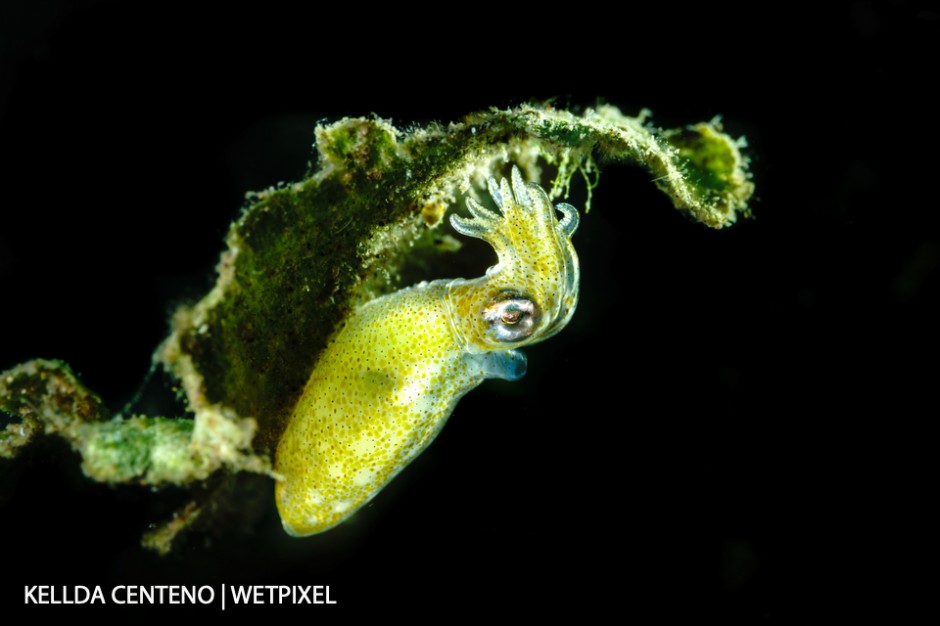
Found this pygmy squid at Anilao during a safety stop. I put my torch behind it and shot this with just torch lighting to bring out the translucence.

Parked myself in front of this yellow goby and waited for it to yawn. It was living in a beer bottle with its partner. Shot in Anilao.

Shot this crinoid shrimp against the pattern of its host crinoid in Anilao. This isn’t the usual black-background shot, but I like the striped pattern in the different angles.

A manta passing overhead at Tubbataha.
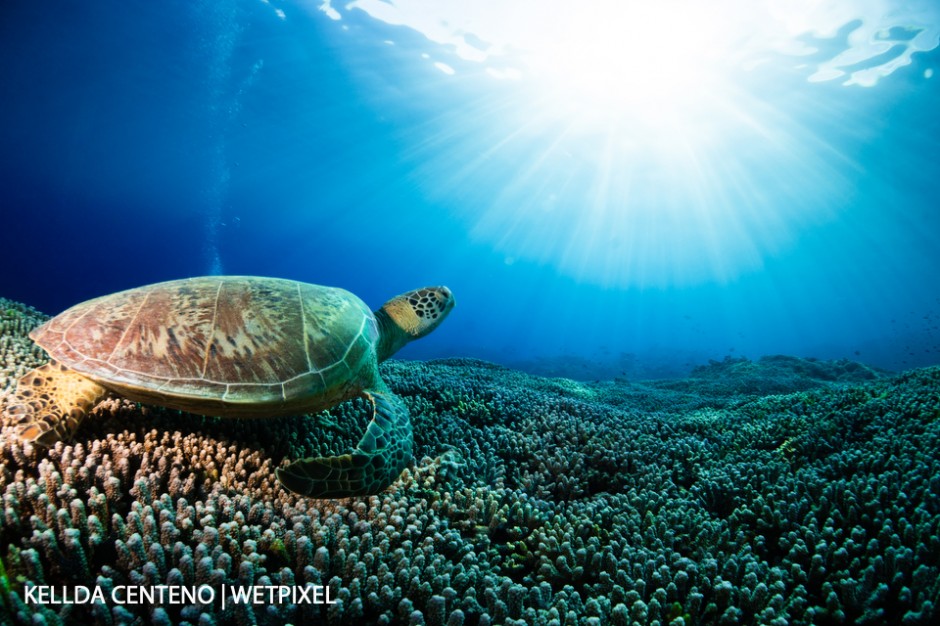
What my dreams are made of a green turtle, staghorn coral as far as the eye can see, and fantastic visibility in Tubbtaha.
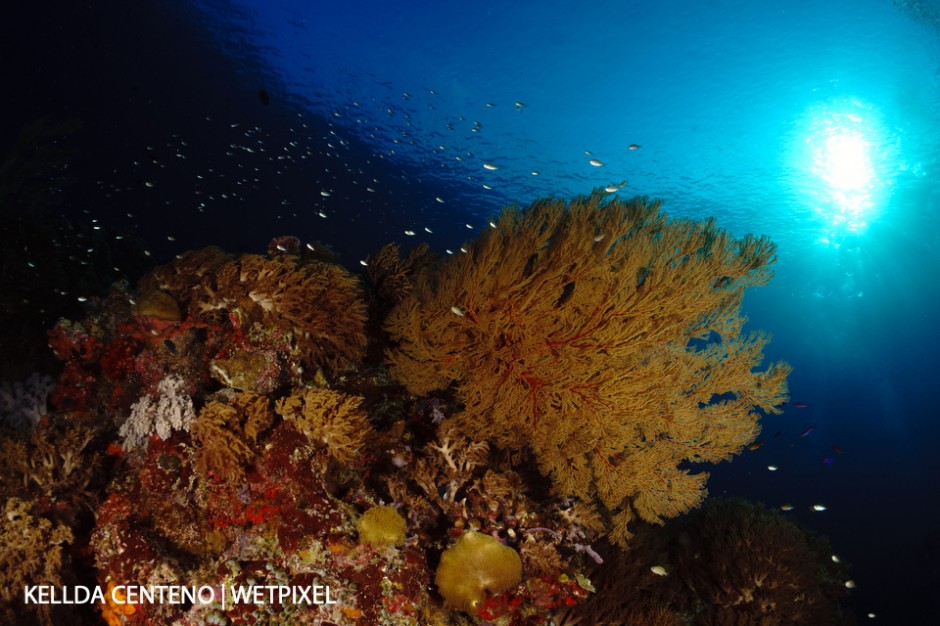
Late afternoon reef view of corals and tiny reef fish at Tubbataha.

There are many skeleton shrimps in the muck sites of Anilao. You can actually see through its head to see the other eye!
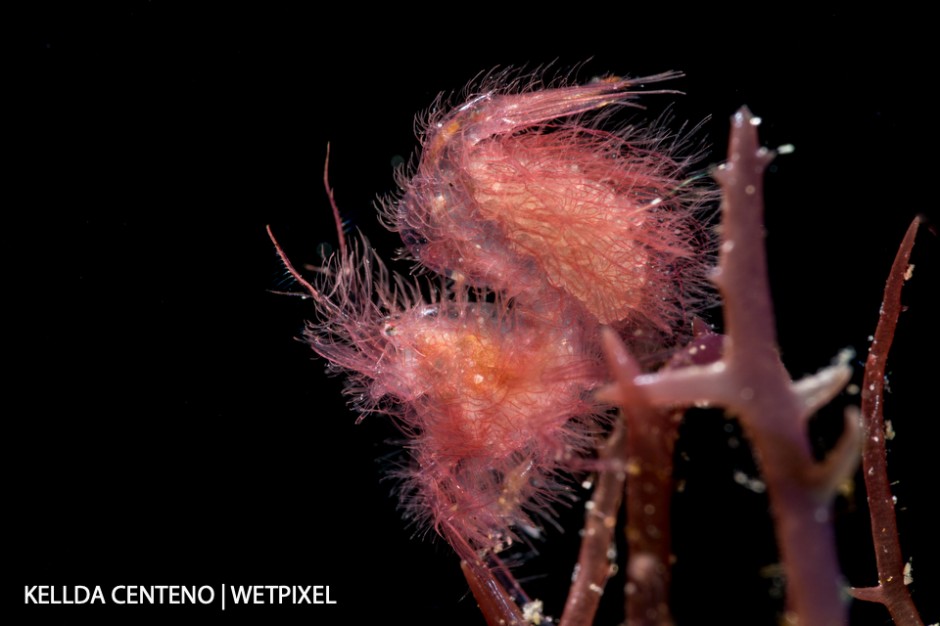
This hairy shrimp was smaller than a grain of rice. After getting some shots, I experimented with both back and front lighting to see the details more clearly.